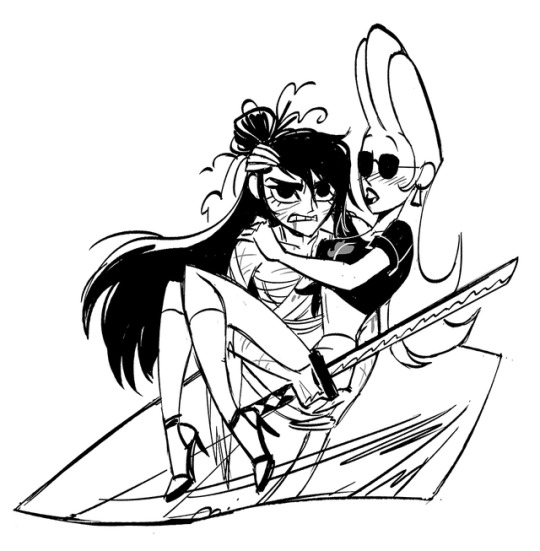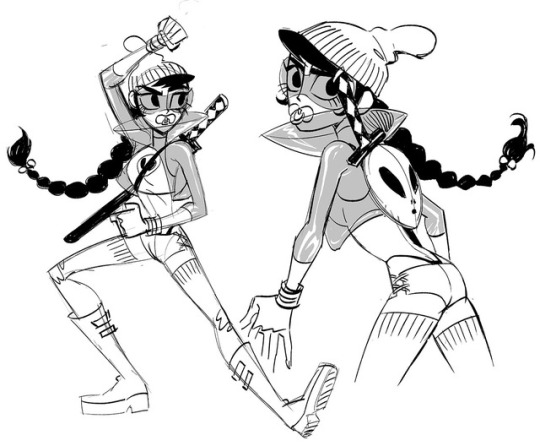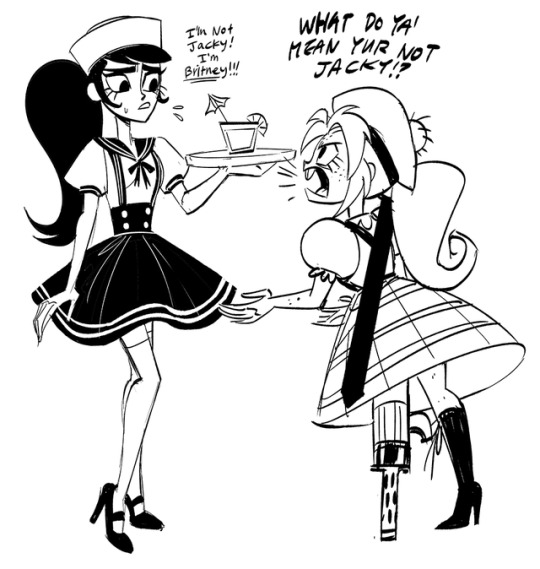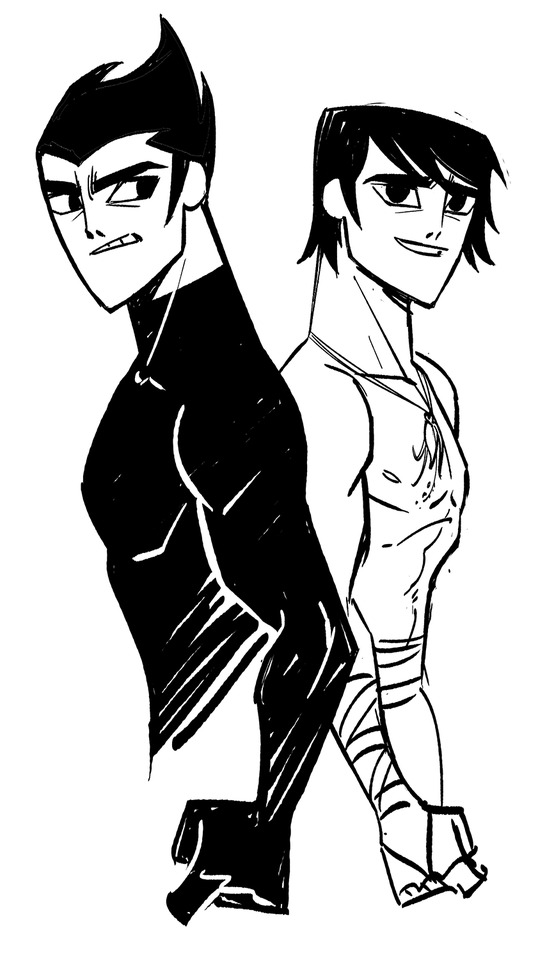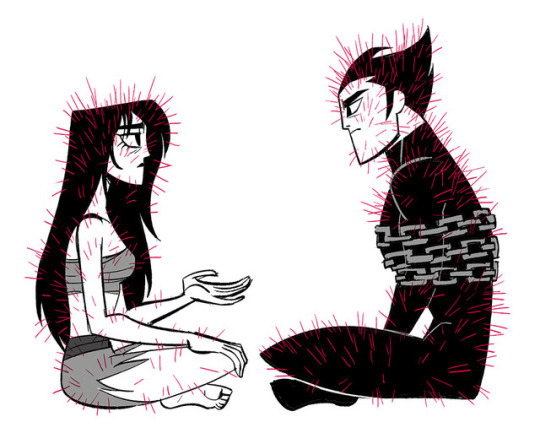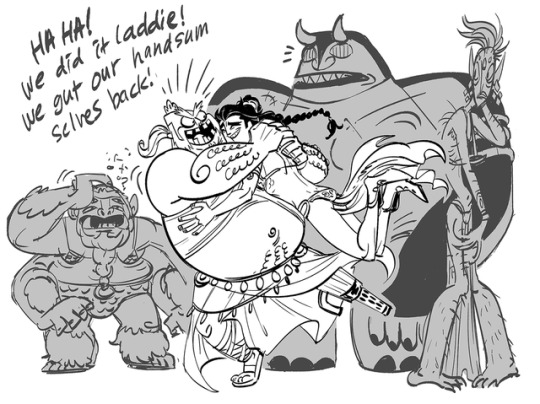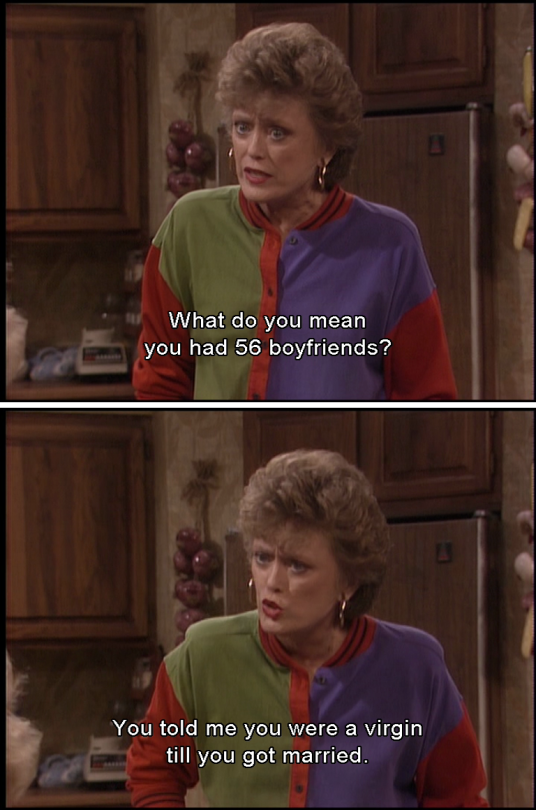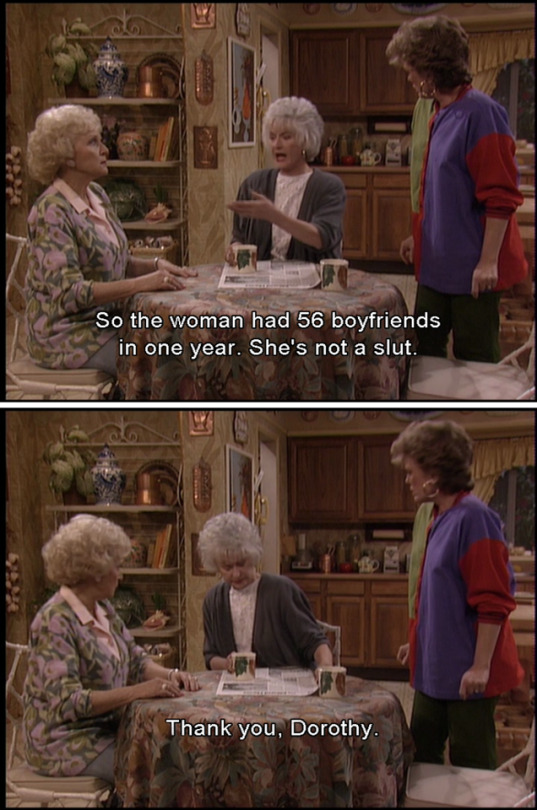Text
Picrew Master List (For Me) Part 1
Part 2! Part 3! Part 4! Part 5! Part 6! Part 7! Part 8! Part 9!
Okay! So, Picrews have been pretty popular since this past summer and I’ve made a considerable amount of them.
BUT! It’s tough to find them if you see a cool one on tumblr and the person posting didn’t put a link for it! There are tons! So, I’m showing a list of Picrews I’ve made, with the link, the name in English and my avatar!

Wonder Meka
https://picrew.me/image_maker/9889
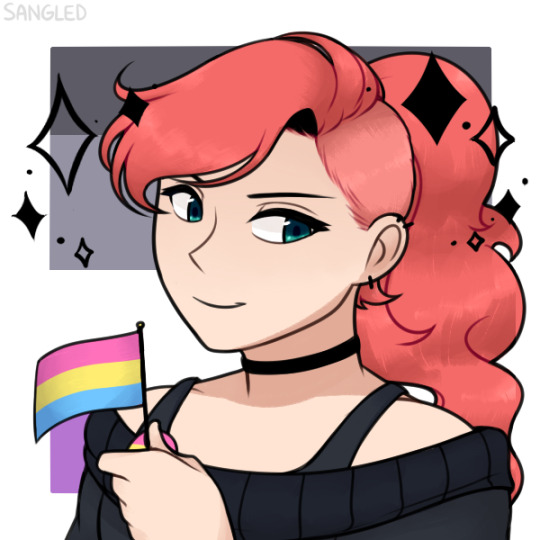
Sangled Character Creator
https://picrew.me/image_maker/94097
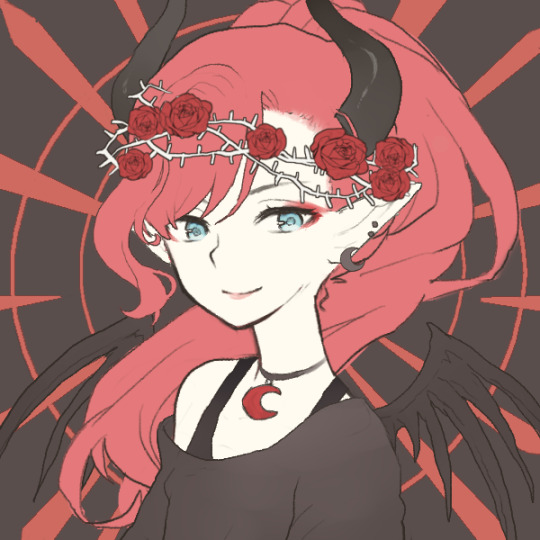
Name ((Unfortunately that’s what google translated it to))
https://picrew.me/image_maker/41329
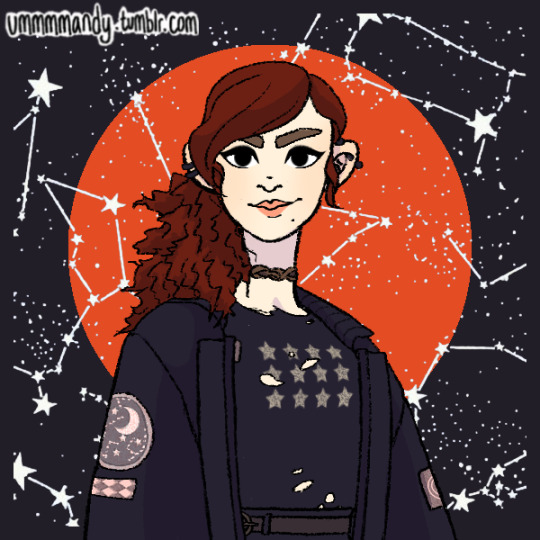
Girl Maker
https://picrew.me/image_maker/114808
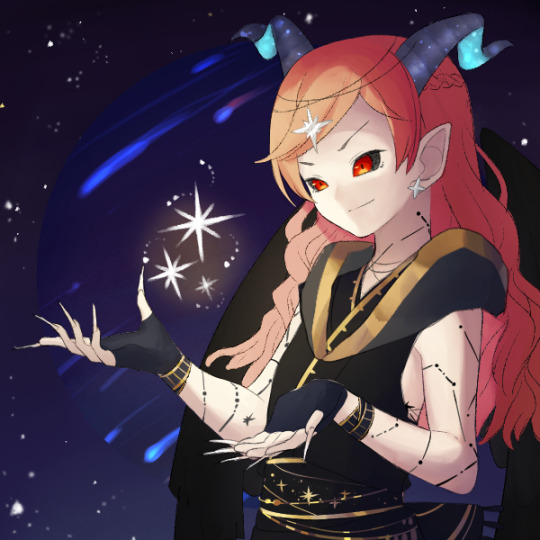
Hoshi Child Maker
https://picrew.me/image_maker/4893

Favorite Face Maker
https://picrew.me/image_maker/41709
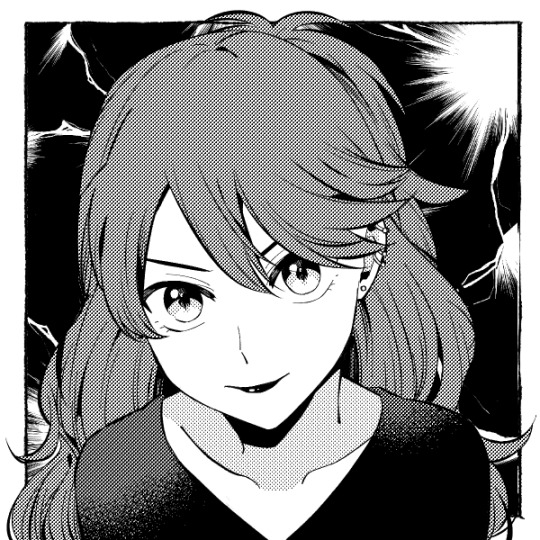
One-Piece Maker
https://picrew.me/image_maker/17250

Astrolavas’ Character Creator
https://picrew.me/image_maker/110010

Dying Boy
https://picrew.me/image_maker/3351

Kabotasu’s Man Maker
https://picrew.me/image_maker/28654
Now, because tumblr is rude and won’t let me post more than ten pictures at a time, I’m going to be making multiple posts. But I will finish this damn list!
Also, if anyone wants me to help them find a picrew, feel free to send me a picture of the avatar in question and I’ll try to find it!
363 notes
·
View notes
Text
“So let me get this straight. We’re here to rescue a princess.”
“That’s right.”
“At the request of a princess.”
“Right again.”
“And you, who will be leading the expedition, are also a princess.”
“You’re very perceptive.”
“How big is your royal family, again?“
“We don’t have one.”
“But–“
“We overthrew our monarchy centuries ago, but we kept most of the titles around. The rank of ‘princess’ is held by the directors in charge of various civil service branches.“
“Huh. And the princess we’re rescuing today is in charge of…?”
“Public sanitation.”
“The Lord of Death’s Dominion kidnapped your public sanitation director?”
“We think he’s a little confused.”
89K notes
·
View notes
Text
Resources For Writing Sketchy Topics
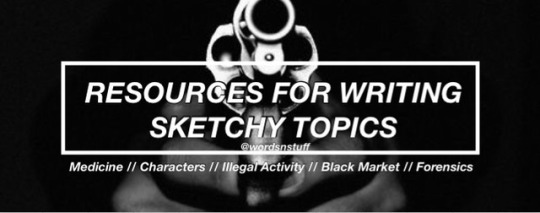
Medicine
A Study In Physical Injury
Comas
Medical Facts And Tips For Your Writing Needs
Broken Bones
Burns
Unconsciousness & Head Trauma
Blood Loss
Stab Wounds
Pain & Shock
All About Mechanical Injuries (Injuries Caused By Violence)
Writing Specific Characters
Portraying a kleptomaniac.
Playing a character with cancer.
How to portray a power driven character.
Playing the manipulative character.
Portraying a character with borderline personality disorder.
Playing a character with Orthorexia Nervosa.
Writing a character who lost someone important.
Playing the bullies.
Portraying the drug dealer.
Playing a rebellious character.
How to portray a sociopath.
How to write characters with PTSD.
Playing characters with memory loss.
Playing a pyromaniac.
How to write a mute character.
How to write a character with an OCD.
How to play a stoner.
Playing a character with an eating disorder.
Portraying a character who is anti-social.
Portraying a character who is depressed.
How to portray someone with dyslexia.
How to portray a character with bipolar disorder.
Portraying a character with severe depression.
How to play a serial killer.
Writing insane characters.
Playing a character under the influence of marijuana.
Tips on writing a drug addict.
How to write a character with HPD.
Writing a character with Nymphomania.
Writing a character with schizophrenia.
Writing a character with Dissociative Identity Disorder.
Writing a character with depression.
Writing a character who suffers from night terrors.
Writing a character with paranoid personality disorder.
How to play a victim of rape.
How to play a mentally ill/insane character.
Writing a character who self-harms.
Writing a character who is high on amphetamines.
How to play the stalker.
How to portray a character high on cocaine.
Playing a character with ADHD.
How to play a sexual assault victim.
Writing a compulsive gambler.
Playing a character who is faking a disorder.
Playing a prisoner.
Portraying an emotionally detached character.
How to play a character with social anxiety.
Portraying a character who is high.
Portraying characters who have secrets.
Portraying a recovering alcoholic.
Portraying a sex addict.
How to play someone creepy.
Portraying sexually/emotionally abused characters.
Playing a character under the influence of drugs.
Playing a character who struggles with Bulimia.
Illegal Activity
Examining Mob Mentality
How Street Gangs Work
Domestic Abuse
Torture
Assault
Murder
Terrorism
Internet Fraud
Cyberwarfare
Computer Viruses
Corporate Crime
Political Corruption
Drug Trafficking
Human Trafficking
Sex Trafficking
Illegal Immigration
Contemporary Slavery
Black Market Prices & Profits
AK-47 prices on the black market
Bribes
Computer Hackers and Online Fraud
Contract Killing
Exotic Animals
Fake Diplomas
Fake ID Cards, Passports and Other Identity Documents
Human Smuggling Fees
Human Traffickers Prices
Kidney and Organ Trafficking Prices
Prostitution Prices
Cocaine Prices
Ecstasy Pills Prices
Heroin Prices
Marijuana Prices
Meth Prices
Earnings From Illegal Jobs
Countries In Order Of Largest To Smallest Risk
Forensics
arson
Asphyxia
Blood Analysis
Book Review
Cause & Manner of Death
Chemistry/Physics
Computers/Cell Phones/Electronics
Cool & Odd-Mostly Odd
Corpse Identification
Corpse Location
Crime and Science Radio
crime lab
Crime Scene
Cults and Religions
DNA
Document Examination
Fingerprints/Patterned Evidence
Firearms Analysis
Forensic Anthropology
Forensic Art
Forensic Dentistry
Forensic History
Forensic Psychiatry
General Forensics
Guest Blogger
High Tech Forensics
Interesting Cases
Interesting Places
Interviews
Medical History
Medical Issues
Misc
Multiple Murderers
On This Day
Poisons & Drugs
Police Procedure
Q&A
serial killers
Space Program
Stupid Criminals
Theft
Time of Death
Toxicology
Trauma
291K notes
·
View notes
Text
Resources for Writing Injuries
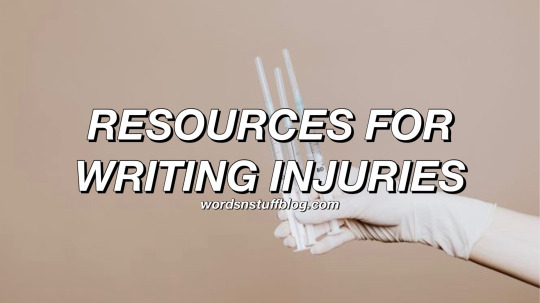
Patreon || Ko-Fi || Masterlist || Work In Progress
–
Head Injuries
General Information | More
Hematoma
Hemorrhage
Concussion
Edema
Skull Fracture
Diffuse Axonal Injury
Neck
General Information
Neck sprain
Herniated Disk
Pinched Nerve
Cervical Fracture
Broken Neck
Chest (Thoracic)
General Information
Aortic disruption
Blunt cardiac injury
Cardiac tamponade
Flail chest
Hemothorax
Pneumothorax (traumatic pneumothorax, open pneumothorax, and tension pneumothorax)
Pulmonary contusion
Broken Ribs
Broken Collarbone
Abdominal
General Information
Blunt trauma
Penetrating injuries (see also, gunshot wound & stab wound sections)
Broken Spine
Lung Trauma
Heart (Blunt Cardiac Injury)
Bladder Trauma
Spleen Trauma
Intestinal Trauma
Liver Trauma
Pancreas Trauma
Kidney Trauma
Arms/Hands/Legs/Feet
General Information | More
Fractures
Dislocations
Sprains
Strains
Muscle Overuse
Muscle Bruise
Bone Bruise
Carpal tunnel syndrome
Tendon pain
Bruises
Injuries to ligaments
Injuries to tendons
Crushed Hand
Crushed Foot
Broken Hand
Broken Foot
Broken Ankle
Broken Wrist
Broken Arm
Shoulder Trauma
Broken elbow
Broken Knee
Broken Finger
Broken Toe
Face
General Information
Broken Nose
Corneal Abrasion
Chemical Eye Burns
Subconjunctival Hemorrhages (Eye Bleeding)
Facial Trauma
Broken/Dislocated jaw
Fractured Cheekbone
Skin & Bleeding
General Information (Skin Injuries) | More (Arteries)
femoral artery (inner thigh)
thoracic aorta (chest & heart)
abdominal aorta (abdomen)
brachial artery (upper arm)
radial artery (hand & forearm)
common carotid artery (neck)
aorta (heart & abdomen)
axillary artery (underarm)
popliteal artery (knee & outer thigh)
anterior tibial artery (shin & ankle)
posterior tibial artery (calf & heel)
arteria dorsalis pedis (foot)
Cuts/Lacerations
Scrapes
Abrasions (Floor burns)
Bruises
Gunshot Wounds
General Information
In the Head
In the Neck
In the Shoulders
In the Chest
In the Abdomen
In the Legs/Arms
In the Hands
In The Feet
Stab Wounds
General Information
In the Head
In the Neck
In the Chest
In the Abdomen
In the Legs/Arms
General Resources
Guide to Story Researching
A Writer’s Thesaurus
Words To Describe Body Types and How They Move
Words To Describe…
Writing Intense Scenes
–
Masterlist | WIP Blog
If you enjoy my blog and wish for it to continue being updated frequently and for me to continue putting my energy toward answering your questions, please consider Buying Me A Coffee, or pledging your support on Patreon, where I offer early access and exclusive benefits for only $5/month.
Shoutout to my $15+ patrons, Jade Ashley and Douglas S.!
63K notes
·
View notes
Text
How To Write a Group Of Villains - A Brief Summary
I always see lists on how to write villains alone, but never about groups. So I’d like to give a few pointers on how to write these characters from what I do know about them.
One thing I’ve noticed from all the stories I’ve read, video games I played, and movies I watched is that you can automatically pinpoint each individual within a group. They all have their own quirks and fall into common tropes. Tropes are not a bad thing as long as they are done well.
Here’s a list of all the tropes I’ve seen done in any type of media, both properly and poorly:
-The Leader:
Is usually the level-headed one in charge of all the other villains. May have a weird personality trait of their own, or depicted as completely serious. Either way, the leader does not mess around and is single-minded towards his/her/their goal.
*If you want to write this character as serious, you should be careful to not make them too bland. Explain their motives and show their drive to succeed in a subtle or obvious way, depending on how the story itself is written.
-The Crazy One:
*Cue maniacal laughter*
Almost every story I’ve seen tends to have a villain who’s sanity is questionable, or they simply aren’t sane at all. Whether it’s from their past or they chose to be that way, they tend to be the most entertaining to watch. For me, anyways. They are often reckless and quick to act, with little to no regard for the well-being of others (or even themselves). They can be used either for comedy relief or to make an already grave situation worse. It’s both of these most of the time. The Leader can have trouble keeping this character under control, since their actions can be unexpected.
-The Funny One:
Can also be a hybrid of The Crazy One, or they can be a separate chracter entirely. Not much I can say about this one. They like to make jokes and use quips in anything they say. May get on The Leader’s nerves.
-The Strategist:
Can also be The Leader, but does not have to be. They come up with all of the plans for the group (with approval from The Leader) and help to determine what the best course of action would be. Could also be considered ‘The Smart One’, since The Strategist is commonly depicted as a scientist or some other form of higher intelligence. This trait tends to make this character full of themselves and think they are above their cohorts (aside from The Leader, whom they may be afraid of). They usually despise the idea of failure.
-The Backstabber:
Can be any of these characters aside from The Leader. They often surface if they are not on board with The Leader’s plans. They will turn against The Leader, sometimes bringing other members of the group to join them. This will either cause the group to fall apart or will have The Leader remove this character from the group entirely (through death, exile, enslavement, etc).
-The Tank:
Is the most powerful of the group, or at least appears that way. Can sometimes be The Leader. Can either be depicted as the silent, serious type who doesn’t speak much (if at all), or the dense type who has to be told things multiple times. Even then, they may misinterpret the information and ruin The Leader’s plans.
-The Cruel One:
Can be any of these characters, or simply one separate individual. They are known for taunting and harassing the protagonist in several ways, ranging from mild to downright twisted and insane. They can push the protagonist to their breaking point. Sometimes they can even corrupt the protagonist by making them do something that goes completely against everything they believe in. This leads to the protagonist questioning their path and motives for their own primary goal.
-The Sympathetic One:
The member of the group who doesn’t seem to hate the protagonist as much as the other villains do. Still follows The Leader’s plan wholeheartedly, yet also seems to understand the protagonist’s plight. May or may not have some sort of important connection to the protagonist. Could be any of the characters in this list, even The Leader. Can be a separate individual as well.
-The Fallen Hero/Friend:
A member of the group who used to be close to the protagonist(s), but has now joined the villains. Whether it was willingly or because they had no other choice, they may either:
*Hate the protagonist(s)
*Want to join them again, but can’t for a specific reason
*Wish to leave their old life behind, cutting all ties with what made them who they were before.
*Once again, can be any of the characters on this list or another individual.
-Whenever you write any of these characters, keep these three things in mind:
Give them all motives. I cannot stress this enough. It doesn’t have to be an essay’s worth of explanations for each and every villain, but they should all have some sort of reason as to why they’re even there. Otherwise, why did you put them into the story?
Show, Don’t Tell. This is much easier when it comes to video games, tv shows and movies since you can literally show what’s happening without saying a word. When writing, give a clear and concise explanation of things involving the villains and their situations, but don’t start rambling about, let’s say, a villain’s favortie pair of socks for five pages. The story will become too much for a reader to digest, as well as lose the appeal. Make it short, sweet, and to the point. Your audience will thank you for that. But don’t be afraid to sneak in a one or two extra details for foreshadowing, if you want to make things more interesting.
The villains can be likeable. Just because they aren’t who the audience should be rooting for, it doesn’t mean that you can’t give them a few redeeming qualities. Have one of them enjoy nature. Have them make the readers laugh with their antics, like hitting each other or robbing from some rich dude down the street. Make them have some human qualities so that the audience can relate to them. If one or two of them are unlikeable, that’s fine. But if the entire group is unlikeable to the point of being unbearable for the audience to watch/read, you are doing something wrong.
Thanks for listening. Feel free to add some opinions of your own!
7K notes
·
View notes
Text
Scene Transitions
An important part of structuring your story in any format is the transition between scenes. When not handled properly, time and/or location jumps in a narrative can become disorientating and confusing, making it harder for the audience to keep up with the action. There are three important things to focus on when transitioning between scenes: where the first scene ends, where the second scene begins, and how to connect the two.
It’s important that each scene have closure. When you leave a scene, you need to know that the goal of that scene was reached. If you leave the scene too early, before you receive that closure, your audience will be left hanging, feeling unsatisfied and off balance. You need to ‘cut away’ when the scene comes to its natural end, when everything is understood and the audience is ready to move onto the next idea. If you leave the scene too late, it drags your story, and makes it feel like the scene is longer than it is.
As with the end of a scene, the beginning of a new scene must feel natural. If you have to backtrack immediately after starting your scene in order to explain whats going on, then it means you’re not starting at the beginning of the scene. You can sometimes get away with doing this, if the reflection is placed naturally in the writing, but you shouldn’t try and push your luck. If all of your scenes start with an immediate backpedal to explain where everyone is, how they got there, and when it takes place, then you need to go back and fix some things.
Information about the change in time and location are important to include. If you didn’t, then it would be impossible for the audience to tell if, when or how these changes occurred. The most widely accepted way of transitioning between scenes is to detail the things done by the characters to go from scene A to scene B. They can do so by showing the transition between locations (“They walked the distance to the theatre, laughing the whole way”), points in time (“hours passed as she sat reading in her favorite chair”), or combinations of the two (“they drove for days, the grassy hillsides of home growing into a looming mountain range”). The information in the transition must do everything to set up the new scene that’s starting.
I am going to use a segment from “These Shallow Graves” by Jennifer Donnelly as an example of what not to do when transitioning between scenes. In chapter thirty-four, a scene is ending where the protagonist and her love interest meet secretly during a ball and make a plan for her to sneak out later that evening. The scene ends on an angsty moment as they both watch her almost arranged fiance dancing with the competitor for his affections. Chapter thirty-five immediately begins with the two of them having met up and halfway to their destination. It is then explained how the protagonist had left the party early, snuck out, and made it to the meeting point.
Feels kinda jenky huh? Here’s how we could smooth this out.
Their plan for meeting up that evening involves the protagonist telling her uncle (who an attendee) that she is feeling faint and using that as an excuse to leave the ball early. This would make more sense as a place to end the scene as it signals the beginning of the transition between locations. When she sneaks out the house is a good place to officially begin the next scene, as it signals another change in locations. Because the time spent at the protagonist’s home is not important to the overall story (her waiting for everyone to fall asleep) this could serve as the transition between the scene of the first and the scene of the second meetings. The cab ride from her house to the meeting place is also its own small transition, and is a good place to reflect on past information without interfering with anything else going on (such as dialogue and bonding between love interests).
Remember! All of the important things to keep in mind when writing scene transitions are:
Know where to end a scene.
Know where to begin a scene.
Know how to connect the scenes.
4K notes
·
View notes
Text
20 things I want more of in fiction: strong female characters
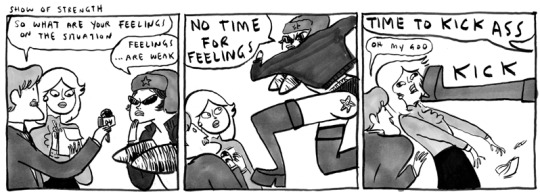
To quote TheMarySue.com, strong female characters are rarely strong and rarely characters. Strong Female Characters™ are leather-clad, emotionless, “independent,” defined by their relationships to men, and often have a tragic backstory (often involving abuse at the hands of men). More often than not, they are portrayed to be just as powerful or even more so than male protagonists, but in the end are relegated to fighting the secondary villain(ess).
So here is my list of 20 things I want to see in strong female characters.
Strong female characters who are girly: Not “feminine,” girly. They don’t wear tight leather bodysuits, they wear pink dresses and curl their hair and are excited when Sephora comes out with a new blush product.
Strong female characters who are funny: I mean, come on. I can count on one hand the number of strong female characters who could be comedians.
Strong female characters who support other women: Don’t make them hate the girls who have sex or wear makeup. Don’t support the idea that femininity is weak.
Strong female characters who are not traditionally attractive: Make them fat. Give them acne. Maybe they have bushy eyebrows. Who knows?
Strong female characters who fall in love and remain strong: If she can lift a truck at the beginning of the story, getting the man will not change that. Being strong is not undesirable.
Strong female characters who are not physically strong: Why do they need to lift a car to be strong? Women can be mentally and emotionally strong too. Example: A WWII nurse who has to deal with recent amputees and vets with PTSD. Do you know how much strength that would require?
Strong female characters who are tomboys/manly: Be cautious with this one. There is a whole list of harmful tropes surrounding this idea. For more information, see TV Tropes’ Tomboy page.
Strong female characters who don’t use long-range weapons: Let them be the smasher for once. I want to see them throw punches.
Strong female characters who become stronger on their own accord: Have them want to do more, and train to become better or strive to learn more. BUT (and this is a big but) don’t make them do it because they were abused. Don’t.
Strong female characters who are LGBT*QIA: Enough said.
Strong female characters who are POC: See above.
Strong female characters who are older and not hardened by war: give me an prankster grandma or a general who is known as “mom.”
Strong female characters who have feelings: Please stop making them emotionless or merely snarky/sarcastic. I mean, have you ever met anyone who was only sarcastic and nothing else? People like that don’t exist.
Strong female characters who are strong because of women: Maybe their moms taught them how to fight. Maybe they were inspired by a warrior queen. Stop giving them five older brothers. Seriously.
Strong female characters who aren’t lone warriors: Give them a badass crew (bonus points if they’re all women) whom she considers her friends. Real people have friends.
Strong female characters who have a family: They need at least one family member that they love and want to protect. Stop making them estranged from their parents or orphans.
Strong female characters who cry: Please, let them have feelings.
Strong female characters who aren’t defined by men: Don’t give them emotion only when they fall for the male protag. Don’t make their backstory all about when they were abused by a man. Don’t give them mentors who are all men. Don’t attribute her abilities to men.
Strong female characters who don’t define men: Stop having her strength be the measure that the male protagonist must surpass. Stop having her death give motivation to the male characters. This must end.
Strong female characters who weren’t abused: Having rape/abuse as a motivation is a disgusting cliche. Stop it. Just don’t.
Read more about strong female characters:
Geekfeminism
The Mary Sue
TV Tropes
Huffington Post
Edit: #21 Strong female characters who are disabled: Stop having the girl in a wheelchair need saving. Disabled does not equal weak!
11K notes
·
View notes
Text
How do I Develop my Characters?
I’m creating this character, Alice, a little differently than I normally do. Generally, I get an image in my head of what the character looks like, and then I’ll narrow down personality traits and names as I get to know them a little better. After I do this development, I then figure out the plot and plan the rest of the story. (This is just one of the many methods I use to develop my characters. )
The Whitebridge Chronicles series is interesting for me in that NONE of the characters have been created in this way. Every one of the people of Whitebridge has been a quick one-line idea that has then expanded into a character and eventually a story.

A Study of Character: Alice Canterbury
Original Concept: A superstitious character whose life revolves around their superstitious beliefs.
What do I know already?
Alice has lived in Whitebridge for her entire life.
Alice is superstitious to the point it takes a toll on her interactions with others.
Alice’s superstitious habits affect the people around her.
After I have this brief character sketch, the next step is to flesh it out. I can do that by asking some questions on what would drive the plot.
How will the existing personality traits create conflict?
She often unintentionally offends people because of the superstitions she follows.
If her superstitions and rituals serve a purpose, something bad could happen if she were unable to perform them correctly.
What are her goals or motivations?
Because of her superstitious beliefs, she wants some things changed around the town. This could create personal comfort/peace of mind, or to prevent something from happening.
Who or what would make sense as an adversary?
A town mayor or authority figure who has to address both complaints made by and about her.
The people making complaints about Alice.
The people affected by the complaints Alice is making.
If these superstitions serve a purpose, the thing she is preventing from happening.
Now that I have some of the basic makings of the story, I can come up with some plot ideas. These are going to be really simple, no longer than a paragraph and are always subject to change.

Relevant plot ideas:
Alice makes a complaint to the mayor. The mayor addresses the complaint. The resolved complain creates a new issue. The new issue is resolved and everyone moves on with their lives.
The mayor approaches Alice about a complaint about her. Alice decides to confront the person who made the complaint. The confrontation leads to a disagreement and becomes destructive. Alice and the disgruntled neighbor resolve the conflict and make good on the damages.
Alice is unable to properly perform one of her superstitious rituals. Because of this, something terrible happens. The town comes together to resolve this terrible event and they all come to a better understanding of Alice because of this.
Now that I’m armed with three new story ideas, I’m going to pick one and develop her character to benefit the plot.
Questions to consider:
If her superstitions are preventative measures, are they passed down through her family? If not, is it a hereditary condition or learned behavior?
Does Alice have any close friends or family who understand the meaning behind her unusual behaviors?
Who are the other characters in this story and what do their interactions with Alice look like?
Does Alice have any other personality traits that will affect the direction of the story?
What does Alice’s life look like? Does she have a job? Did she inherit money?
Now that I have all of this to work from, I can move forward with this story!

If you have any questions or concerns, please feel free to send me an ask or complete THIS SURVEY (anonymous). My ask box is always open.
Keep reading
467 notes
·
View notes
Text
Writing Traumatic Injuries References
So, pretty frequently writers screw up when they write about injuries. People are clonked over the head, pass out for hours, and wake up with just a headache… Eragon breaks his wrist and it’s just fine within days… Wounds heal with nary a scar, ever…
I’m aiming to fix that.
Here are over 100 links covering just about every facet of traumatic injuries (physical, psychological, long-term), focusing mainly on burns, concussions, fractures, and lacerations. Now you can beat up your characters properly!
General resources
WebMD
Mayo Clinic first aid
Mayo Clinic diseases
First Aid
PubMed: The source for biomedical literature
Diagrams: Veins (towards heart), arteries (away from heart) bones, nervous system, brain
Burns
General overview: Includes degrees
Burn severity: Including how to estimate body area affected
Burn treatment: 1st, 2nd, and 3rd degrees
Smoke inhalation
Smoke inhalation treatment
Chemical burns
Hot tar burns
Sunburns
Incisions and Lacerations
Essentials of skin laceration repair (including stitching techniques)
When to stitch (Journal article–Doctors apparently usually go by experience on this)
More about when to stitch (Simple guide for moms)
Basic wound treatment
Incision vs. laceration: Most of the time (including in medical literature) they’re used synonymously, but eh.
Types of lacerations: Page has links to some particularly graphic images–beware!
How to stop bleeding: 1, 2, 3
Puncture wounds: Including a bit about what sort of wounds are most likely to become infected
More about puncture wounds
Wound assessment: A huge amount of information, including what the color of the flesh indicates, different kinds of things that ooze from a wound, and so much more.
Home treatment of gunshot wound, also basics
More about gunshot wounds, including medical procedures
Tourniquet use: Controversy around it, latest research
Location pain chart: Originally intended for tattoo pain, but pretty accurate for cuts
General note: Deeper=more serious. Elevate wounded limb so that gravity draws blood towards heart. Scalp wounds also bleed a lot but tend to be superficial. If it’s dirty, risk infection. If it hits the digestive system and you don’t die immediately, infection’ll probably kill you. Don’t forget the possibility of tetanus! If a wound is positioned such that movement would cause the wound to gape open (i.e. horizontally across the knee) it’s harder to keep it closed and may take longer for it to heal.
Broken bones
Types of fractures
Setting a broken bone when no doctor is available
Healing time of common fractures
Broken wrists
Broken ankles/feet
Fractured vertebrae: Neck (1, 2), back
Types of casts
Splints
Fracture complications
Broken noses
Broken digits: Fingers and toes
General notes: If it’s a compound fracture (bone poking through) good luck fixing it on your own. If the bone is in multiple pieces, surgery is necessary to fix it–probably can’t reduce (“set”) it from the outside. Older people heal more slowly. It’s possible for bones to “heal” crooked and cause long-term problems and joint pain. Consider damage to nearby nerves, muscle, and blood vessels.
Concussions
General overview
Types of concussions 1, 2
Concussion complications
Mild Brain Injuries: The next step up from most severe type of concussion, Grade 3
Post-concussion syndrome
Second impact syndrome: When a second blow delivered before recovering from the initial concussion has catastrophic effects. Apparently rare.
Recovering from a concussion
Symptoms: Scroll about halfway down the page for the most severe symptoms
Whiplash
General notes: If you pass out, even for a few seconds, it’s serious. If you have multiple concussions over a lifetime, they will be progressively more serious. Symptoms can linger for a long time.
Character reaction:
Shock (general)
Physical shock: 1, 2
Fight-or-flight response: 1, 2
Long-term emotional trauma: 1 (Includes symptoms), 2
First aid for emotional trauma
Treatment (drugs)
WebMD painkiller guide
Treatment (herbs)
1, 2, 3, 4
Miscellany
Snake bites: No, you don’t suck the venom out or apply tourniquettes
Frostbite
Frostbite treatment
Severe frostbite treatment
When frostbite sets in: A handy chart for how long your characters have outside at various temperatures and wind speeds before they get frostbitten
First aid myths: 1, 2, 3, 4, 5 Includes the ones about buttering burns and putting snow on frostbite.
Poisons: Why inducing vomiting is a bad idea
Poisonous plants
Dislocations: Symptoms 1, 2; treatment. General notes: Repeated dislocations of same joint may lead to permanent tissue damage and may cause or be symptomatic of weakened ligaments. Docs recommend against trying to reduce (put back) dislocated joint on your own, though information about how to do it is easily found online.
Muscular strains
Joint sprain
Resuscitation after near-drowning: 1, 2
Current CPR practices: We don’t do mouth-to-mouth anymore.
The DSM IV, for all your mental illness needs.
Electrical shock
Human response to electrical shock: Includes handy-dandy voltage chart
Length of contact needed at different voltages to cause injury
Evaluation protocol for electric shock injury
Neurological complications
Electrical and lightning injury
Cardiac complications
Delayed effects and a good general summary
Acquired savant syndrome: Brain injuries (including a lightning strike) triggering development of amazing artistic and other abilities
Please don’t repost! Reblogging is fine, of course. You can find the original document (also created by me) here.
EDIT 3/20/19: This post is now approx. five years old. Yes, I am aware some of the links are broken. No, I’m not going to go through and fix them. I have a job now and that job is not “maintain a database of writing resources.” However, you are welcome to make your own post with updated links, or put updated links in your reblogs.
127K notes
·
View notes
Text
How To Write a Killer Sex Scene: An Illustrated Guide.
@silkoversteel asked:
HI first of all, thank you for this blog it’s fantastic and super helpful and secondly, I was wondering if you would know of any posts/articles about writing sex well? Particularly gay and lesbian sex well? Because it is something that I want to explore writing, but as an asexual, I have no experience of my own and I want to write it realistically. Thanks!!
Great question. There are different ways to incorporate sex scenes into your work, and none are less valid than the others: maybe you want to keep sex more abstract, more artistic and emotional. Maybe you want to focus predominantly on how your characters feel for each other and leave the mechanics of the sex itself up to the reader’s imagination.
Some people prefer to take the “fade to black approach” after the characters kiss, or just show the reader the aftermath (i.e. them lying in bed together, undressed, possibly smoking a cigarette if you want to get French about it) and let them fill in the blanks.
However, since you specifically said you were interested in writing about sex, I’m going to presume you don’t want to skimp on any of the sordid details. So, fair warning to my readers that this post will get a tiny bit graphic, and definitely a lot less PG-13 than I usually talk about on my blog. It’s also probably not the best thing to read at work, around small children, or in front of your grandma.
So without further ado, let us begin!
Keep reading
1K notes
·
View notes
Photo

How to Survive an Atomic Bomb, 1950
this government-promoted book suggested that men wear wide brimmed hats to protect against the heat flash when the bomb exploded.
65K notes
·
View notes
Photo

There’s nothing wrong with understanding your personal limits #EthicalMemes
50K notes
·
View notes


